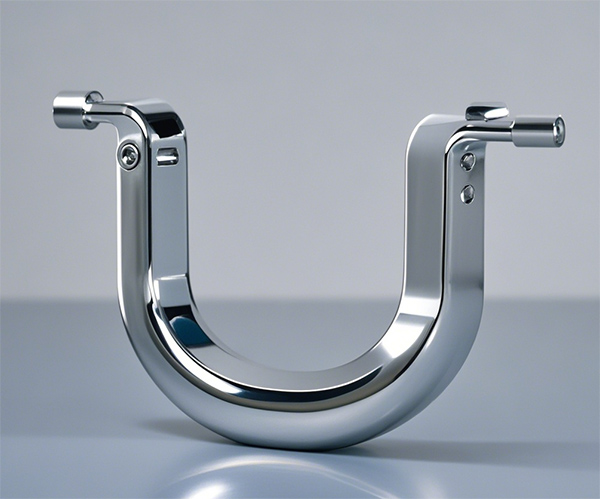Metal brackets are metal structural components fabricated through sheet metal processes, used to support, fix other components, or bear certain loads. They are usually manufactured by taking advantage of the plasticity of metal sheets (such as steel plates, aluminum plates, etc.) and using sheet metal processing methods like stamping, bending, and cutting.
Metal brackets have diverse structural forms.
They are in the shape of the letter "U" and can well embrace and fix objects. Usually, they have two parallel sides and a connecting bottom, and the lengths of the two sides can be the same or different, depending on specific usage requirements.
They are in the shape of a right angle, composed of two mutually perpendicular sides. The lengths and widths of the two sides can be customized according to actual needs, enabling them to flexibly adapt to different installation planes and support requirements.
Similar to the letter "T", they have a main trunk part and a branch part perpendicular to the main trunk. The main trunk part is usually used to connect the main support structure or installation surface, while the branch part is used to carry other components.
They are in the shape of the letter "Z", with three interconnected parts forming two folding angles. This shape endows them with a certain degree of elasticity and spatial adaptability.
They are three-dimensional structures composed of multiple sheet metal components through welding, riveting, or bolt connection methods. They can provide all-round support and have strong bearing capacity.
They have a channel-shaped appearance, usually a U-shaped channel with certain height edges on both sides. They can accommodate and fix some objects with specific shapes.

In the Construction Field: They support the main structures of buildings, fix glass, aluminum plate and other panels, and assist in the installation of ceilings, lamps, air-conditioning systems, etc. during interior decoration.
In the Industrial Equipment Field: They support equipment installation, bear the weight of equipment under static and dynamic conditions, install various equipment and transmission devices, and fix pipeline systems.
In the Car Manufacturing Field: They support the body structure, provide the necessary strength and rigidity for the body, and install various small parts.
In the Electrical and Communication Field: They install power transformers, distribution cabinets, busbars and other electrical equipment, ensuring the safe transmission of electricity.
In the Aerospace Field: They are used to support key structures such as the wings, fuselage, and landing gear of an aircraft, and install various internal equipment of the aircraft.
The manufacturing materials of metal brackets depend on the specific requirements of the environment and application. Commonly used materials include carbon steel, stainless steel, aluminum, titanium alloy, and copper. Carbon steel has a lower cost and is widely used in some occasions where the corrosion resistance requirement is not high. The food processing industry is an important application area for stainless steel brackets. In the aerospace field, aluminum alloy brackets are widely used. In the electrical field, copper alloy brackets are used to support the conductive busbars in substations and the terminal blocks of electrical equipment, utilizing their conductivity to ensure the good transmission of electricity.

The design of metal brackets needs to consider factors such as the type of load to be borne (static, dynamic, concentrated, distributed, etc.), the using environment (temperature, humidity, corrosive media, etc.), and the coordination with other components. In terms of processing, different materials have different processing techniques. For example, carbon steel and stainless steel involve stamping, bending, and welding techniques, while aluminum alloy and titanium alloy have specific heat treatment and processing technique requirements to ensure that the quality, precision, and performance of the brackets meet the usage requirements. Meanwhile, surface treatment techniques (such as painting, electroplating, etc.) can further improve the corrosion resistance and aesthetics of the brackets.
Metal brackets are an indispensable part of modern industries and construction fields. The characteristics of their materials, types, designs, and processing jointly determine their performance and value in various application scenarios. With the development of technology, the performance requirements for metal brackets will continue to increase, and their design and manufacturing technologies will also keep innovating.